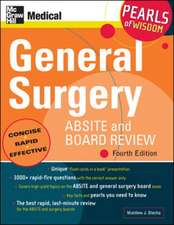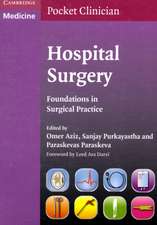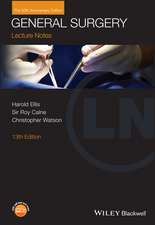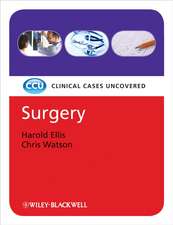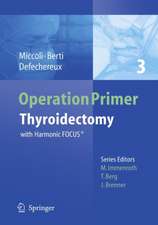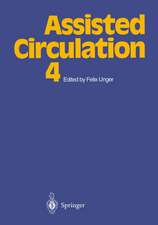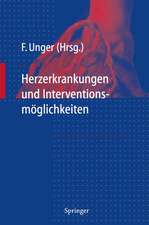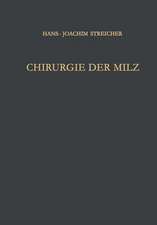Assisted Circulation
Editat de Felix Ungeren Limba Engleză Paperback – 15 noi 2011
Preț: 736.58 lei
Preț vechi: 775.34 lei
-5% Nou
Puncte Express: 1105
Preț estimativ în valută:
141.07€ • 145.34$ • 118.17£
141.07€ • 145.34$ • 118.17£
Carte tipărită la comandă
Livrare economică 24 februarie-10 martie
Preluare comenzi: 021 569.72.76
Specificații
ISBN-13: 9783642672705
ISBN-10: 3642672701
Pagini: 684
Ilustrații: XXIII, 653 p.
Dimensiuni: 170 x 244 x 36 mm
Greutate: 1.07 kg
Ediția:Softcover reprint of the original 1st ed. 1979
Editura: Springer Berlin, Heidelberg
Colecția Springer
Locul publicării:Berlin, Heidelberg, Germany
ISBN-10: 3642672701
Pagini: 684
Ilustrații: XXIII, 653 p.
Dimensiuni: 170 x 244 x 36 mm
Greutate: 1.07 kg
Ediția:Softcover reprint of the original 1st ed. 1979
Editura: Springer Berlin, Heidelberg
Colecția Springer
Locul publicării:Berlin, Heidelberg, Germany
Public țintă
ResearchCuprins
Historical Background.- Medical Research and the Doctor’s Conscience.- Questions and Predictions.- I. Counterpulsation.- 1. Counterpulsation: Foundation and Future.- 2. Intra-aortic Balloon Pumping: Current Status and Prospects.- 3. Clinical Experience with Intra-aortic Balloon Pumping and the Pulsatile Assist Device.- 4. Clinical Results of Intra-aortic Balloon Pumping in Selected Groups of Patients.- 5. Indications for Intra-aortic Balloon Pumping.- 6. Changing Role of Cardiac Assistance in the Management of Myocardial Infarction Shock.- 7. The State of Assisted Circulation in the USSR.- 8. The Present Status of External Counterpulsation.- 9. Hemodynamic Response to External Counterpulsation.- II. Left Ventricular Assist Devices.- a) Bypass Ventricles.- 10. A Left Ventricular Aortic Blood Pump for Circulatory Support in Postoperative Patients with Acute Left Ventricular Failure.- 11. An Intracorporeal (Abdominal) Left Ventricular Assist Device: Initial Clinical Trials (LX).- 12. The Ellipsoid Left Ventricular Assist Device: Experimental and Clinical Results.- 13. Design and Evaluation of a Left Ventricular Assist Device: The Angle Port Pump.- 14. An Efficient Electromechanical Left Ventricular Assist Device.- 15. Toward a Blood Pump for Long-Term Left Ventricular Assist Device.- 16. Servo-Controlled Cardiac Assistance: The Effects of Left Ventricular-to-Aortic and Left Atrial-to-Aortic Assistance on Infarct Size.- 17. Atrio-Aortic Left Ventricular Assist Device.- 18. Left Ventricular Assistance with a Double-Chambered Alternate Pumping Device.- b) Roller Pumps.- 19. Concepts and Clinical Experience with a Left Ventricular Assist Device After Intracardiac Operation.- 20. Experimental and Clinical Left or Biventricular Assist Device with Local Heparinization and BloodFiltration.- 21. Low Flow Right Atrial and Left Ventricular Assist Device Without an Oxygenator for Cardiogenic Shock. A Revised Concept.- c) Centrifugal Pumps.- 22. A Centrifugal Pump for Circulatory Assistance.- 23. Partial or Total Heart Substitution with a Double-Centrifugal Device — Theoretical and Physiologic Studies.- d) Extracorporeal Membrane Oxygenation.- 24. Pulmonary Hemodynamics and Gas Exchange During Venoarterial Bypass with Membrane-Lung Oxygenation.- 25. Aortic Arch Perfusion Modes in Partial and Total Cardiopulmonary Bypass.- III. Total Artificial Heart.- 26. The Total Artificial Heart — a Research Tool or Potential Clinical Reality.- 27. The State of the Art of the Berlin Total Artificial Heart — Technical Aspects.- 28. Experimental Results on the Long-Term Survivals (over 1 Month) with a Total Artificial Heart.- 29. Design of the Pennsylvania State University Artificial Heart and Electronic Automatic Control System.- 30. The Ellipsoidheart in Total Artificial Heart Replacement.- 31. Control Systems for the Total Artificial Heart.- 32. The State of Total Artificial Heart Research in the USSR.- 33. Total Artificial Heart Replacement with Consecutive Heart Transplantation.- IV. Heart Transplantation.- 34. The Clinical Application of Implanted Natural Auxiliary Hearts.- 35. Current Status of Heart Transplantation: the Stanford Experience.- 36. Experimental Auxiliary Heart Transplantation.- V. Driving Systems.- 37. Drive and Management of Circulation Support Systems.- 38. Control of Electric Pneumatic Driving Systems.- 39. The Electrically Driven Left Ventricular Assist Device.- VI. Biomaterials, Artificial Valves.- 40. Material Aspects of Cardiac Assist Devices: the Case History of Avcothane 51 Elastomer.- 41. Some Current Problems and NewDimensions of Polymeric Biomaterials for Blood Contacting Applications.- 42. Hydrophobic Polymers as Materials for Interfacing with Blood.- 43. Carbon Cardiovascular Devices.- Artifical Valves.- 44. Hemolysis in Artificial Heart Valves due to High-Level, Short-Duration Laminar Shear Stress.- VII. Current Literature, 1.1.1975–31.12.1978.- VIII. Places Where Assisted Circulation is Performed.- IX. Summaries.- X. Horizons on the Future Trends in Assisted Circulation.- 45. E. S. Bücherl.- 46. D. A. Cooley.- 47. M. E. DeBakey.- 48. P. Frommer.- 49. F. Gschnitzer.- 50. S.D.Moulopoulos.- 51. Y. Nosé.- 52. K.Polzer.- 53. Å. Senning.- 54. J.T.Watson.

